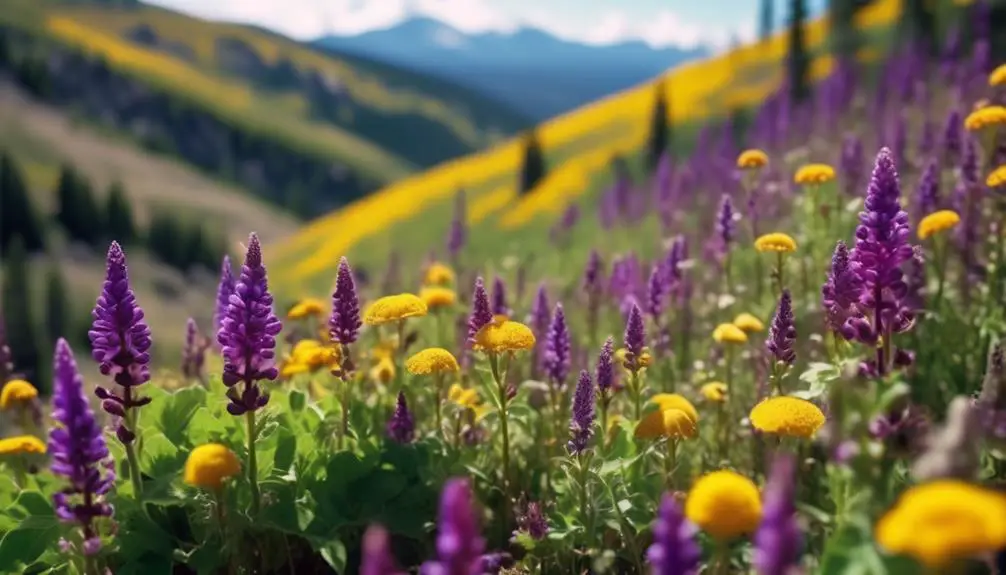Imagine wandering through the vast and untamed landscapes of Colorado, surrounded by nature’s bounty. As you stroll along, your curiosity piqued, you can’t help but wonder what secrets lie beneath your feet and within the foliage around you.
What if I were to tell you that Colorado is home to a plethora of wild edible plants, just waiting to be discovered and savored? From the crisp and refreshing leaves that can be used in salads or cooked like spinach, to the vibrant flowers that can be transformed into wine or steeped into herbal tea, and even the robust roots that can be roasted and enjoyed as a coffee substitute, the possibilities are endless.
So, join us as we embark on a journey through the wild edible plants of Colorado, where culinary delights and health benefits await at every turn.
Berries and Fruits
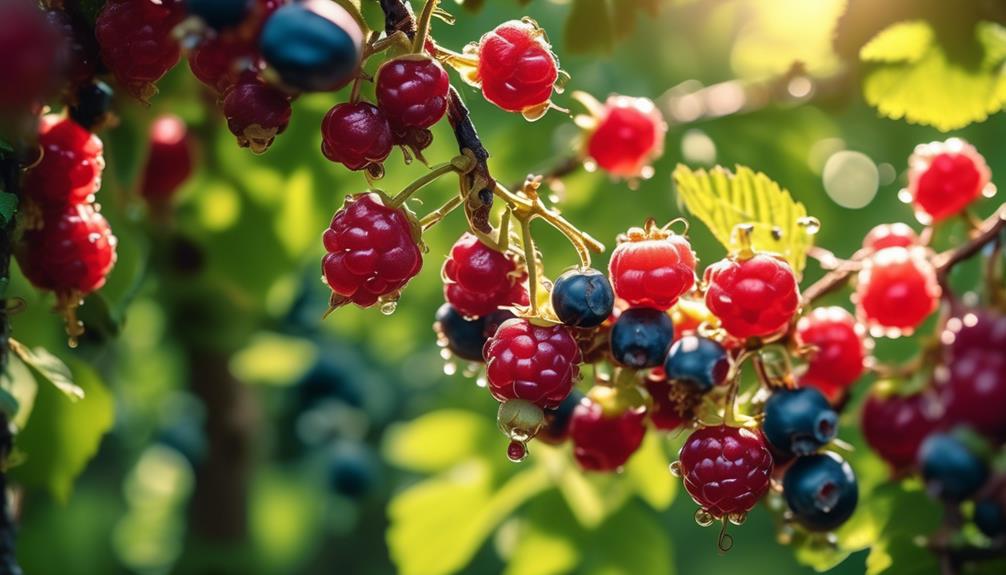
Berries and fruits in Colorado offer a plethora of delicious flavors and unique culinary possibilities. From wild plums to chokecherries and wild strawberries, the state is teeming with diverse and abundant options for foragers. However, it’s crucial to exercise caution when foraging for wild foods, as some lookalike plants may be toxic. Proper identification and preparation are essential for safe consumption.
In addition to their culinary value, wild edible plants like purslane, Oregon grape, and wild onions also offer medicinal benefits. Foragers in Colorado have the opportunity to discover these valuable finds, adding not only flavor but also health benefits to their meals.
The unique climate and geography of Colorado create diverse habitats for a wide variety of wild berries and fruits. From the high mountain regions to the prairies and foothills, there’s an array of flavors waiting to be explored. Juniper berries, rose hips, and feral apples are just a few of the edible wild fruits and berries that can be found throughout the state. Each of these treasures offers distinct flavors and culinary uses, allowing for endless creativity in the kitchen.
Leafy Greens
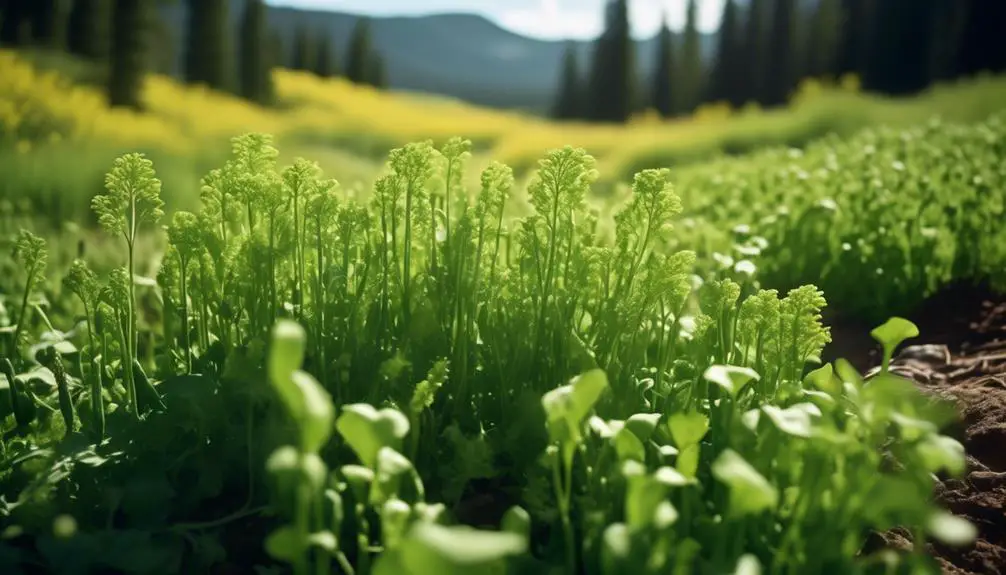
As you explore the diverse culinary possibilities of Colorado’s edible plants, now let’s shift our focus to the abundant and diverse world of leafy greens. Colorado offers a wide array of leafy greens that are both nutritious and delicious. When foraging for these greens, it’s essential to accurately identify the plant species to ensure safe consumption and avoid harmful lookalikes.
Many common weeds, including dandelions and wild onions, have edible leaves that can add a unique flavor to your dishes. From soups to salads, these leafy greens can be a versatile addition to your meals.
While foraging for leafy greens, it’s important to consider safety considerations. Be aware of potential allergens and choose clean, safe foraging areas away from pollution and animal waste.
Learning about the edibility and preparation of specific leafy greens such as dandelions, orache, curly dock, and salsify can expand your culinary options and knowledge of wild edibles. These greens offer a range of flavors and textures, allowing you to experiment and create exciting dishes with locally sourced ingredients.
Nutritious Roots and Tubers
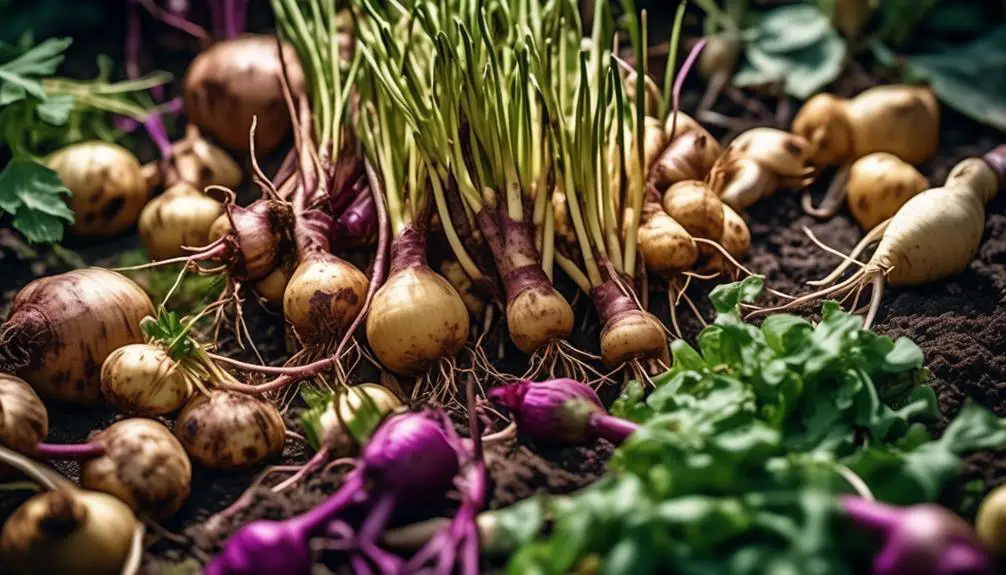
When foraging for nutritious roots and tubers in Colorado’s diverse terrain, it’s essential to accurately identify the plant species to ensure safe consumption and maximize their nutritional benefits. Wild plants provide a rich source of wild food, and roots and tubers are no exception. These underground treasures offer a variety of flavors and textures, making them a valuable addition to your culinary repertoire.
Colorado’s wild roots and tubers, such as wild onions, cattails, and prickly pear, aren’t only delicious but also packed with essential vitamins and minerals. Incorporating them into your meals can provide a unique twist and boost the nutritional value of your dishes. However, it’s crucial to exercise caution and follow proper identification and preparation methods.
When harvesting wild roots and tubers, it’s important to consider sustainability and ethical harvesting practices. Take only what you need and leave enough behind for the plants to regenerate. This ensures the preservation of the natural ecosystem and allows for future foraging opportunities.
To enjoy the full benefits of these nutritious roots and tubers, try incorporating them into soups, stews, or stir-fries. They can add depth of flavor and provide a healthy dose of vitamins and minerals.
Aromatic Herbs and Spices
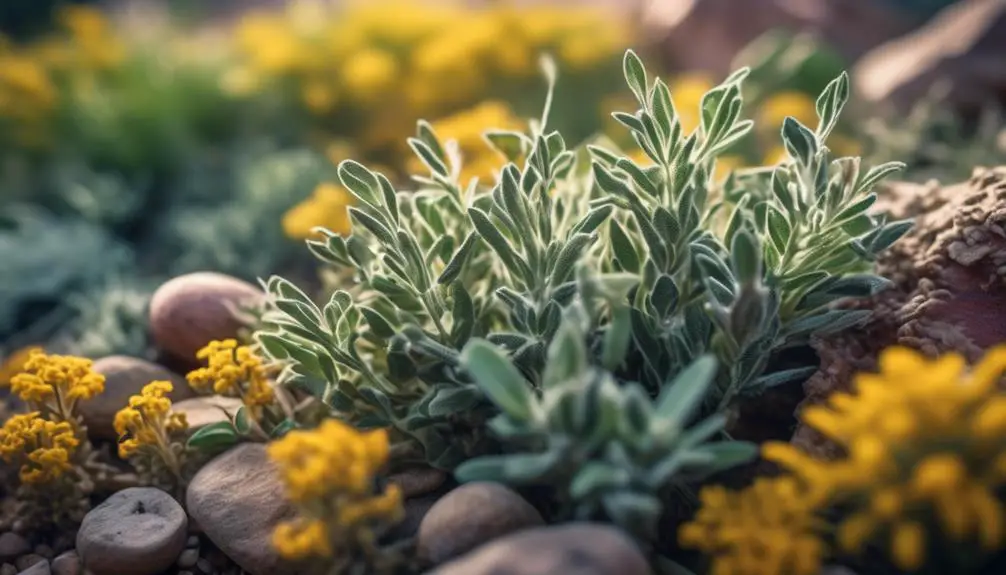
Aromatic herbs and spices bring depth and flavor to wild edible dishes, enhancing the overall experience of foraging and cooking. When you learn to identify and properly use these aromatic plants, you can elevate your culinary exploration of wild edibles.
Colorado is home to a variety of wild herbs and spices that can be incorporated into teas, seasonings, and culinary creations.
One example is bergamot, a wild plant with vibrant purple flowers that has a citrusy, floral aroma. Its leaves can be dried and used to make a refreshing tea or added to salads for a unique twist.
Another option is wild onion, which can be found in meadows and open fields. Its strong, pungent flavor adds a savory kick to dishes like soups, stews, and stir-fries.
Woodruff, with its sweet, hay-like fragrance, is another aromatic herb that can be foraged in Colorado. It’s commonly used in herbal infusions and can be added to desserts and cocktails for a hint of sweetness.
These aromatic herbs and spices not only enhance the flavors of your wild edible dishes, but they also provide an opportunity to connect with nature through foraging.
Edible Flowers
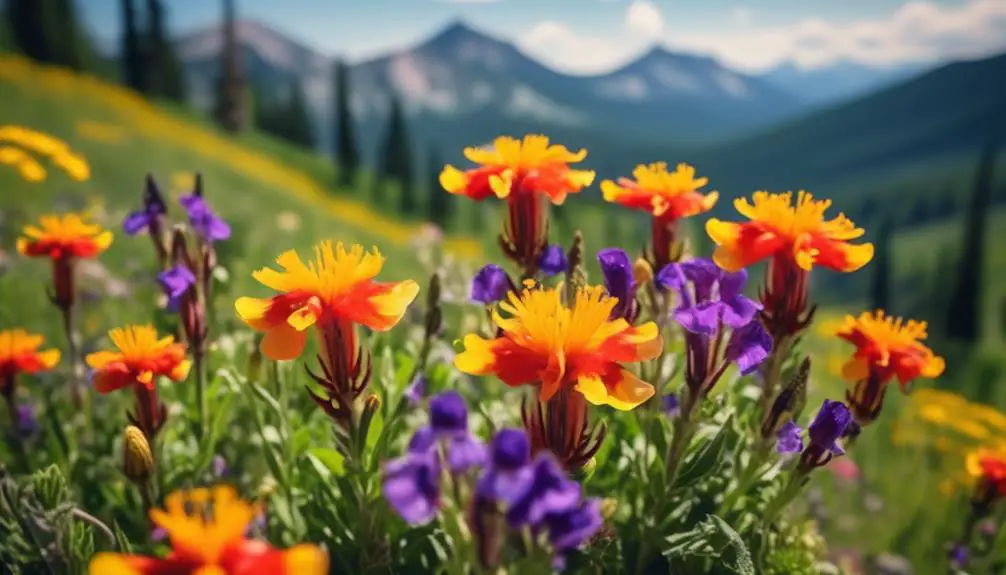
Enhance your wild edible dishes with the vibrant flavors and colors of edible flowers found in Colorado’s wilderness. Adding edible flowers can elevate your meals and make them visually appealing. In Colorado, you can find a variety of edible flowers such as wild asparagus, wild onions, and rose hips.
Wild asparagus is a delicacy that not only provides a unique taste but also offers numerous health benefits. Its tender shoots can be used in salads or lightly sautéed as a side dish. The delicate flavor of wild asparagus adds a subtle earthiness to your dishes.
Wild onions, also known as ramps, are another edible flower found in Colorado. These onions have a distinct garlic-like flavor that adds a bold kick to your recipes. They can be used in soups, stir-fries, or even pickled for later use.
Rose hips, the fruit of wild roses, aren’t only beautiful but also edible. They’re a rich source of vitamin C and can be used in teas, jams, or desserts. Their tangy flavor adds a refreshing twist to your culinary creations.
When gathering edible flowers, always ensure that you properly identify them and gather them from clean, safe areas. Avoid areas with pollution or animal waste. With caution and knowledge, you can enjoy the delightful flavors and vibrant colors of edible flowers in your Colorado wilderness adventures.
Unique Mushrooms
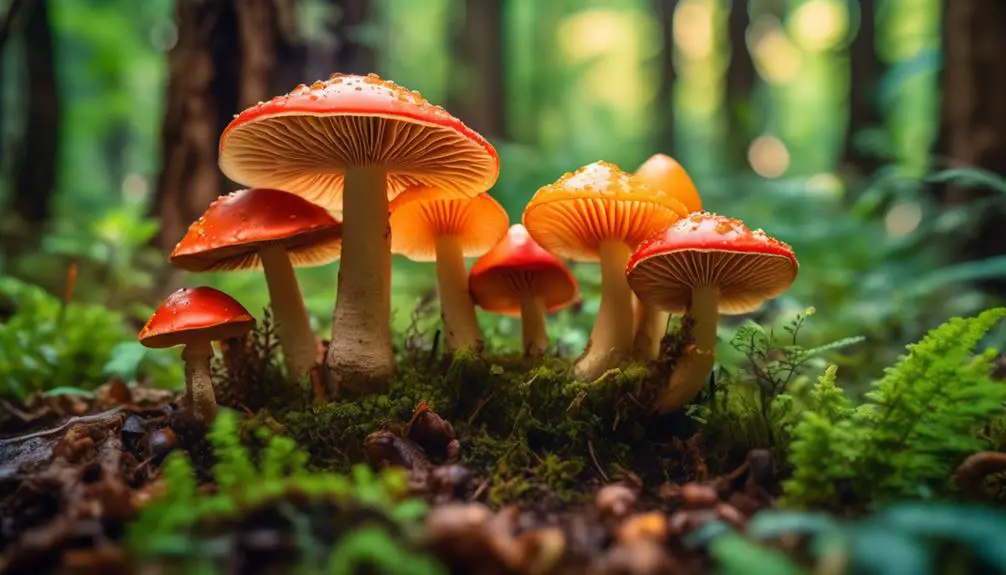
Explore the fascinating world of unique mushrooms found in Colorado’s wilderness, where a variety of species thrive in diverse habitats. From aspen groves to mountain meadows, these wild mushrooms offer a captivating and flavorful experience for those willing to venture out and discover them.
Colorado’s mushroom season typically begins in late spring and extends through the summer and early fall. During this time, foragers can participate in foraging classes to learn about different mushroom species and their identification. These classes provide valuable knowledge and skills, ensuring a safe and enjoyable foraging experience.
Wild mushrooms found in Colorado include the honey mushroom, known for its golden color and sweet taste. Another unique variety is the wild enoki, with its delicate white caps and crunchy texture. The Matsutake mushroom, prized for its distinct aroma and earthy flavor, can also be found in the state’s forests.
However, it’s important to exercise caution when foraging for wild mushrooms. Some species can be toxic or resemble poisonous varieties. It’s crucial to confidently identify the mushrooms before consuming them.
Understanding the preferred habitats of different mushroom species is vital for successful foraging. Some mushrooms prefer damp, shaded areas, while others thrive in open fields or near decaying logs. By learning about these preferences, foragers can increase their chances of finding unique and delectable mushrooms.
Colorado’s wilderness holds a treasure trove of wild mushrooms waiting to be discovered. With the right knowledge and expertise, foragers can enjoy the bounty of flavors and culinary possibilities that these unique mushrooms offer.
Medicinal Plants
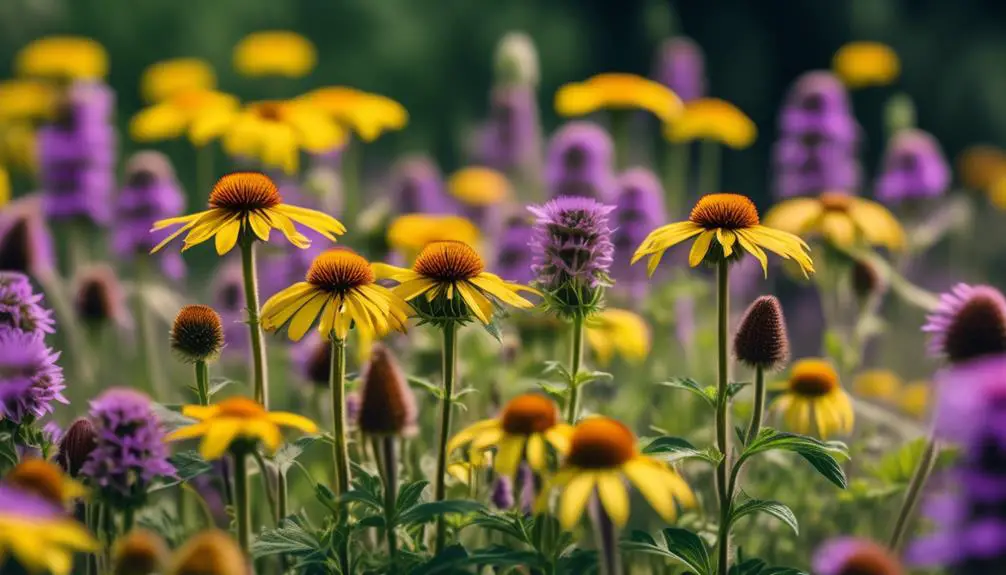
Now that you’ve learned about the unique mushrooms found in Colorado’s wilderness, let’s shift our focus to the diverse range of medicinal plants that can be found in the same natural environment.
Foraging for wild medicinal plants in Colorado can provide you with a wealth of health benefits. However, it’s important to exercise caution and knowledge when searching for these plants.
When foraging for wild medicinal plants, it’s crucial to be able to identify the older plants that have reached their peak potency. These older plants often have higher concentrations of beneficial compounds, making them more effective for medicinal use. Additionally, understanding the potential dangers of certain plants is essential. Some wild plants in Colorado can be potentially deadly if used improperly, so it’s crucial to educate yourself about the plants you intend to use.
Some common medicinal plants found in Colorado include yarrow, mullein, and plantain. Yarrow has been traditionally used to treat wounds, reduce inflammation, and relieve menstrual cramps. Mullein is known for its soothing properties and is often used to alleviate respiratory issues such as coughs and congestion. Plantain has been used for centuries to treat skin irritations and promote wound healing.
Before using any wild plants for medicinal purposes, it’s important to consult with a knowledgeable herbalist or healthcare professional. They can provide guidance on proper identification, preparation methods, and dosage to ensure safe and effective use of these plants.
Edible Weeds
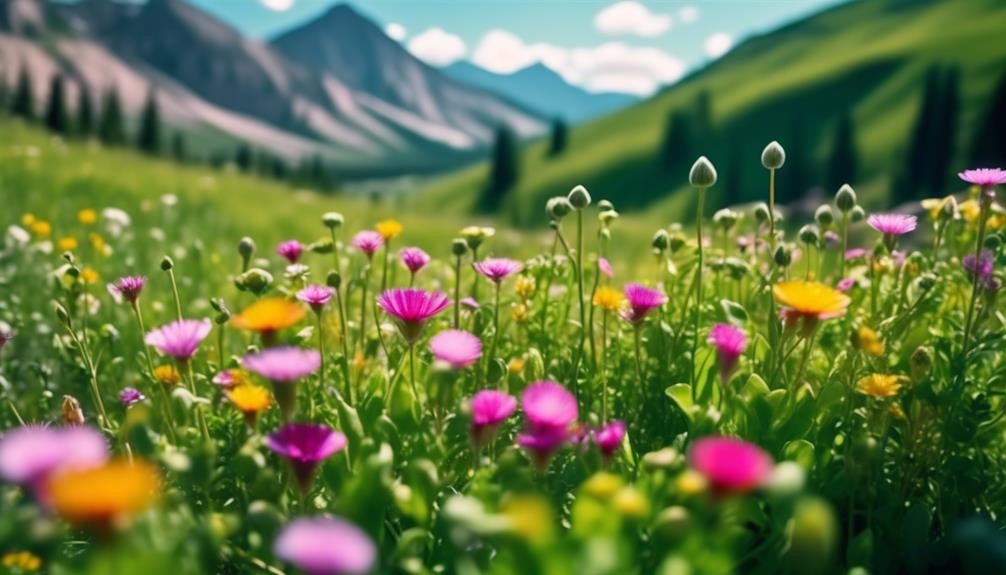
What are some safety measures to consider when foraging for edible weeds in Colorado?
When foraging for edible weeds in Colorado, it’s important to take certain safety measures to ensure a successful and safe experience.
- First and foremost, proper identification is crucial. Familiarize yourself with the characteristics of each edible weed you plan to harvest, as well as any toxic look-alike plants. This will help you avoid potential risks and ensure you gather the right plants.
- Additionally, always forage in areas that are free from pollution and pesticides. Avoid areas near roads, industrial sites, and agricultural fields where chemicals may have contaminated the plants.
- Late summer is an ideal time to forage for edible weeds in Colorado, as many species are at their peak during this season.
- When gathering edible weeds, be mindful of your surroundings and the impact you have on the ecosystem. Take only what you need, leaving enough for other foragers and wildlife.
- Lastly, before consuming any wild plant, thoroughly wash and prepare it just as you’d with produce from a grocery store.
Nuts and Seeds
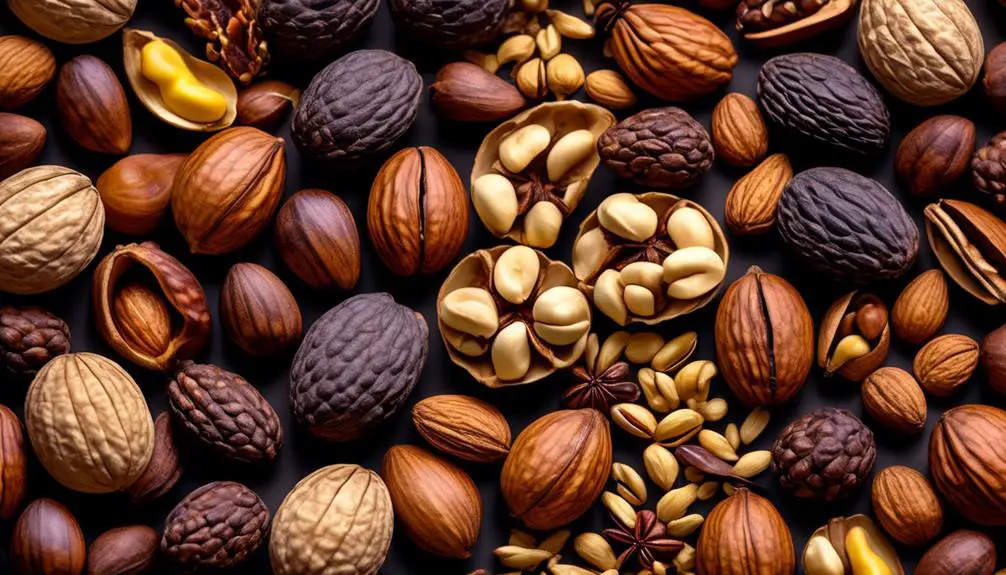
When it comes to foraging for edible plants in Colorado, don’t overlook the abundance of nuts and seeds that can be found in the wild. While many people focus on foraging for berries and greens, nuts and seeds offer a great source of nutrition and flavor.
When you’re out in nature, keep an eye out for trees and plants that produce nuts and seeds. One common nut found in Colorado is the pine nut. These can be found in the cones of pine trees and are a delicious addition to salads or roasted dishes.
Another seed to look for is the sunflower seed. Colorado is home to many wild sunflowers, and their seeds can be harvested and enjoyed. Additionally, wild grasses in shady areas often produce seeds that can be gathered and used in baking or as a crunchy topping for salads.
When identifying nuts and seeds, remember that leaves can sometimes resemble those of poisonous plants, so it’s important to be cautious and learn to differentiate between edible and non-edible varieties. Proper preparation methods, such as drying and shelling, are also important to ensure safe consumption.

Erzsebet Frey (Eli Frey) is an ecologist and online entrepreneur with a Master of Science in Ecology from the University of Belgrade. Originally from Serbia, she has lived in Sri Lanka since 2017. Eli has worked internationally in countries like Oman, Brazil, Germany, and Sri Lanka. In 2018, she expanded into SEO and blogging, completing courses from UC Davis and Edinburgh. Eli has founded multiple websites focused on biology, ecology, environmental science, sustainable and simple living, and outdoor activities. She enjoys creating nature and simple living videos on YouTube and participates in speleology, diving, and hiking.

